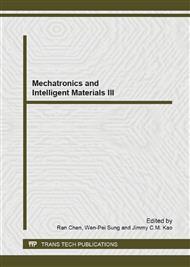p.142
p.148
p.152
p.158
p.163
p.167
p.172
p.176
p.180
Optimization and Application of Secondary Cooling on 37Mn5 Steel ø210mm Round Billet
Abstract:
Aiming at enhancing the internal quality of 37Mn5 steel, a two-dimensional heat transfer mathematical model is established based on Finite Element Method. The synchronization between computing time and casting time is implemented by use of slice moving method. The reasonable of the model is verified by tested temperature. The process of solidification and shell formation is simulated for 37Mn5 steel ∅210mm round billet. The studied results indicate that: after optimization, the internal quality of billet is improved significantly; the defects such as center porosity, shrinkage cavity, intermedium cracks and center cracks were decreased obviously; defects above grade 1 were basically avoided.
Info:
Periodical:
Pages:
163-166
Citation:
Online since:
June 2013
Authors:
Price:
Сopyright:
© 2013 Trans Tech Publications Ltd. All Rights Reserved
Share:
Citation:


